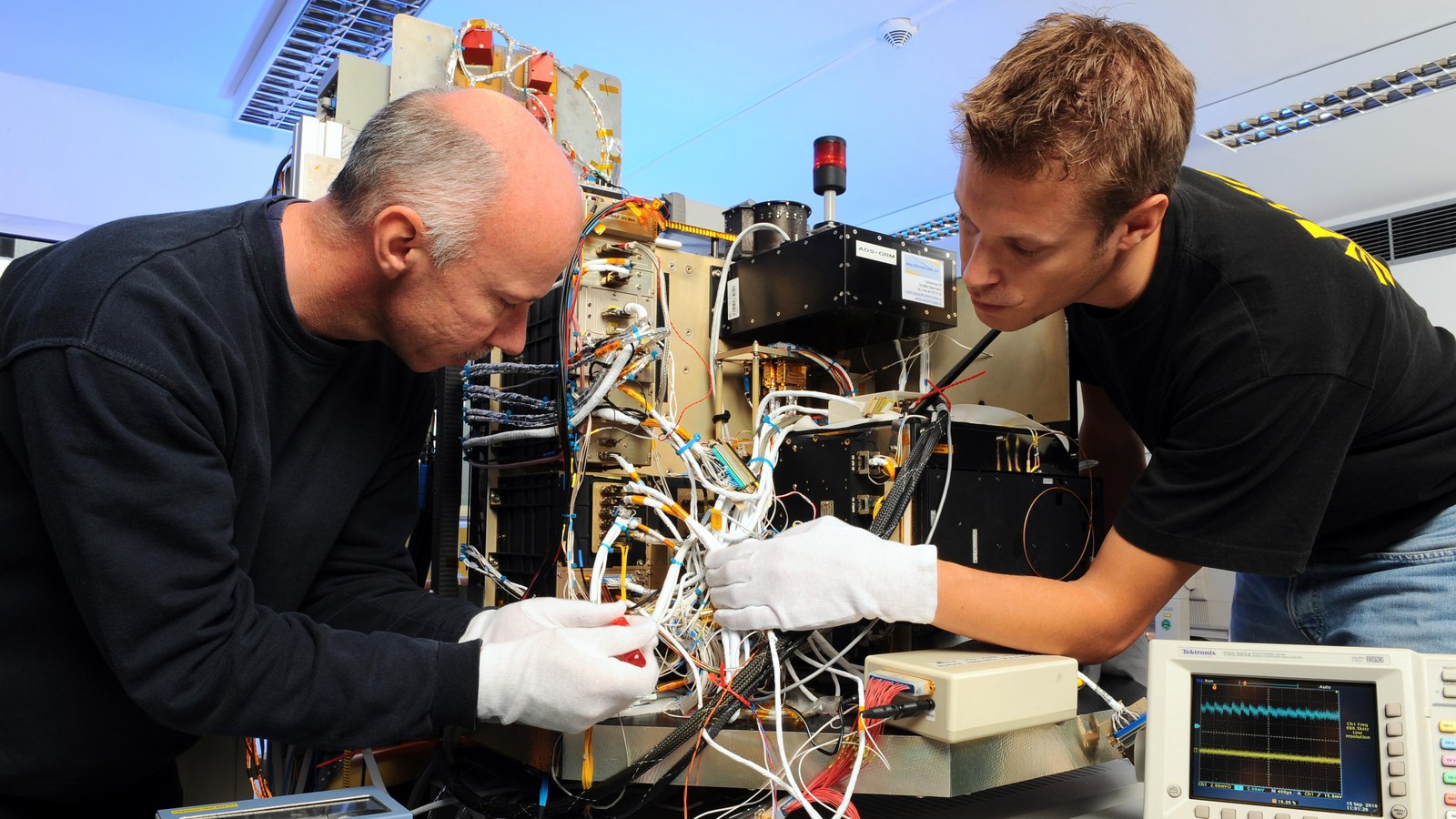Headache for Philae
On 9 July 2015 at 19:45 CEST, Philae reported back to the team at the German Aerospace Center (Deutsches Zentrum für Luft- und Raumfahrt; DLR) Lander Control Center (LCC) – only to then go back to 'silent mode'. Since then, the team has been working hard to get back in contact with the lander and operate it to conduct scientific measurements. "We sent a command to turn on the Rosetta Lander Magnetometer and Plasma Monitor (ROMAP), but have not seen a response," explains DLR's Philae project leader Stephan Ulamec. Using an identical model in the Microgravity User Support Center (MUSC) at DLR, the engineers are currently testing various commands, with which they want to enable and optimise Philae. "In the telemetry received, we have observed signs that Philae could have moved and that its antennas are thus perhaps more concealed or their orientation might have changed."
Philae's move
In the data previously sent by Philae from the surface of Comet 67P/Churyumov-Gerasimenko about its condition, the lander has also transmitted information about the sunlight reaching its solar panels. “This profile – where panels are receiving a great deal of sunlight – has clearly changed between June and July,” says Ulamec. “This cannot be explained only by the course of the seasons on the comet.” The lander could have moved, for example, due to outgassing during the comet's awakening. After a not entirely smooth landing on 12 November 2014, Philae finally halted at a crater rim on uneven terrain – for this reason, even a slight change in its position could mean that its antennas are now obstructed by more objects above it. This would affect communication with Philae.
Blind commands as backup
It is also possible that one of the lander's two radio receiver units is damaged and that one of the transmitter units is not fully functional. However, Philae is programmed to switch back and forth between the two transmitters periodically. This could also explain why contact with Philae is irregular. "We have therefore tested a command on our ground model that will cause Philae to only interact with the functional transmitter." This command has been transmitted to the lander. This 'blind commanding' – without the lander sending a confirmation – should make it possible for it to receive the command and execute it as soon as it is supplied with solar energy during the comet day and switches on.
The engineers at the LCC are also testing another command on the ground model of Philae; they want to try to activate a 'work package' on the lander that was successfully executed in November 2014 during the landing and is still stored by Philae. At that time, the team at the LCC had supplied the lander with a kind of 'emergency program', so that it could still operate five instruments without communication. This occurred as the engineers at the consoles had to adjust their plans to adapt to the evolving situation with a new landing site. "With this work package, the thermal probe MUPUS measured temperatures, ROMAP and SESAME conducted measurements, and PTOLEMY and COSAC researched in 'sniff' mode," says Ulamec. "All of these instruments require no detailed commands, but the stored work package must first of all be retrieved." If this idea works, once Philae switches on, it would start to conduct scientific measurements and then send the data to Earth.
Interaction between lander and orbiter
Until 24 July 2015 the Rosetta orbiter will fly an orbit that satisfies the requirements of the lander and follow a path that is favourable for communication between the two spacecraft. Then, Rosetta will fly with its 11 instruments over the southern hemisphere of the comet, which is now increasingly illuminated by the Sun. Here, the attempts to communicate with Philae will alternate with the priorities for observation with the orbiter instruments. The comet's increasing activity – with its gas and dust ejections –does not allow the orbiter to fly very close to the comet's surface. On 12 July 2015, Rosetta’s star trackers were once again affected by the dusty environment. For this reason, the orbiter is now flying at a safer distance of 170–190 kilometres.
Of course, the Philae lander team at DLR has not given up. "The lander is obviously still functional, because it sends us data, albeit at irregular intervals and at surprising times," says Ulamec. "There have been several times when we feared that the lander would not switch back on, but it has repeatedly taught us otherwise."
The mission
Rosetta is an ESA mission with contributions from its Member States and NASA. Rosetta's Philae lander is contributed by a consortium led by DLR, MPS, CNES and ASI.


